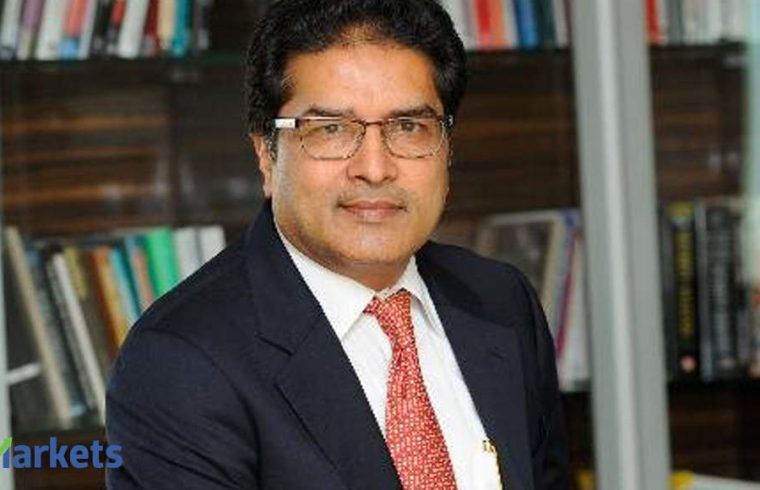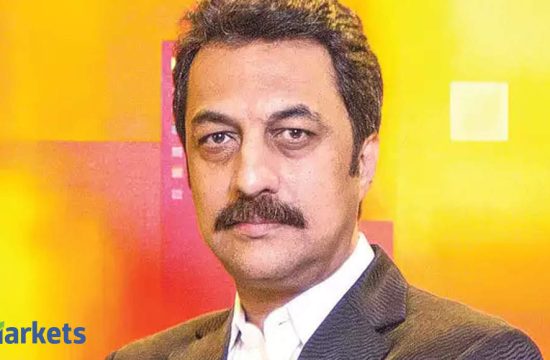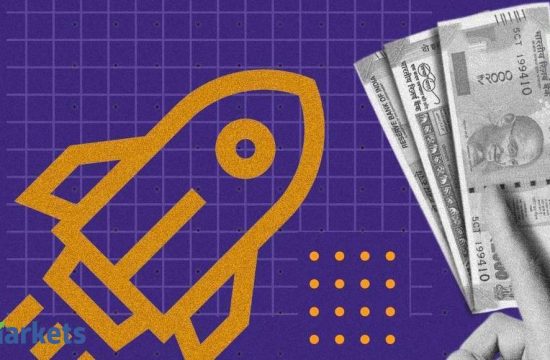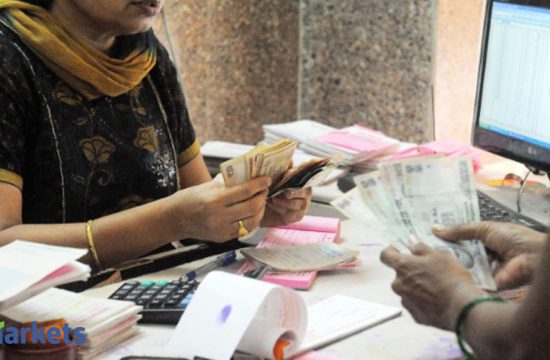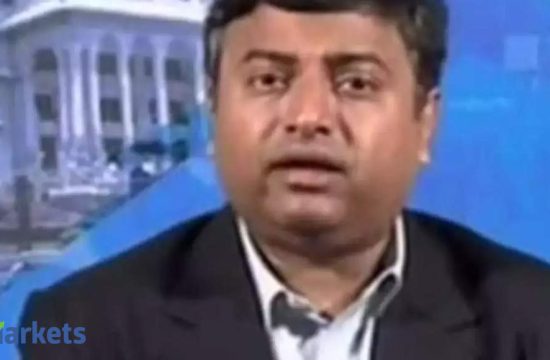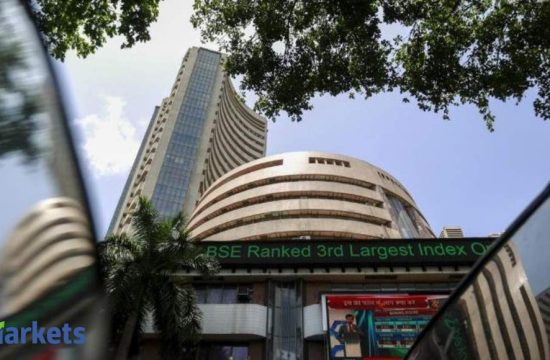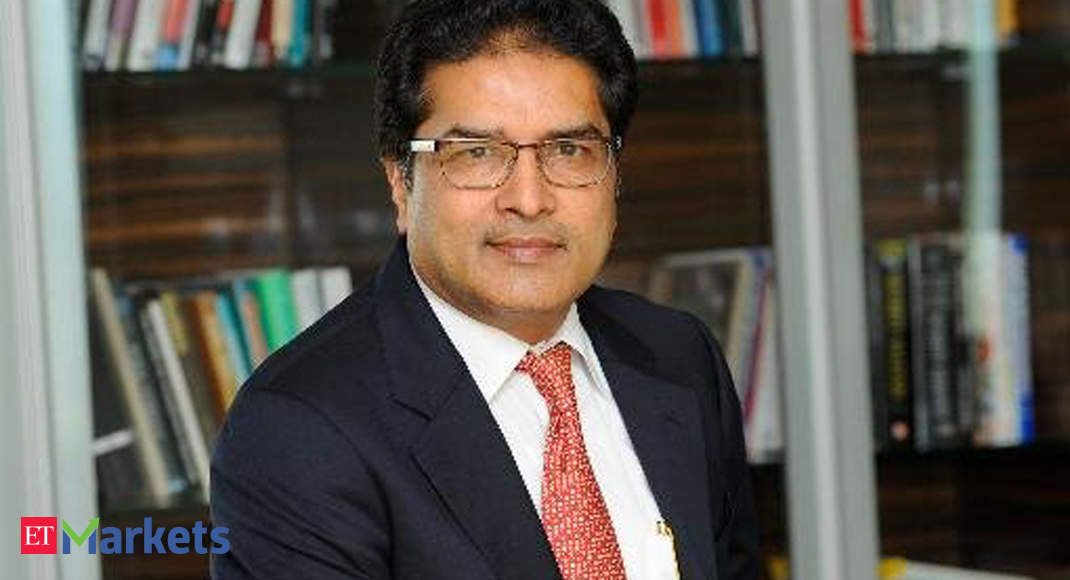
The kind of fear which we are seeing in the debt market is not there in the equity markets, says the Chairman of MOFSL.
Let us talk about specifics of what transpired at Motilal Oswal’s quarterly performance? Before I get into specifics, do you think we should not talk about the quarter gone by and should talk about the current quarter and how business has changed for Motilal Oswal Financial Services?
Yes, Q4 definitely gives you some reality checks and particularly for Motilal Oswal because in Motilal Oswal, operating is 50% of the business and another 50% or 60% is the investment portfolio. So the mark to market is a very big phenomenon in the scheme of things for Motilal Oswal. March being what happened in the last week or in 10 days, the market crashed virtually. So we have reported a loss for the quarter because we made Rs 100 crore usual operating profit, post tax profit from the operations but there was a Rs 350 crore mark to market loss. That is the nature of the balance sheet and hence there was a 250 crore loss. But this is just an optical number. Actually we should focus on the operating profit because this portfolio now is up by 150 crore. So this up and down will continue and over a period of time, it will give anywhere between 15% to 20% return on our own portfolio. But optically, quarter on quarter and year on year, there will be some ups and downs.
Let us break up the businesses into three parts: the brokerage business, the AUM business and the HFC business. What are the trends looking like in the first 45-50 days of this quarter for the brokerage business because now that everything is automated, I would imagine the brokerage business also must be the stable piece for you?
Yes, it is very surprising. The first 45 days have been a big surprise for the brokerage business. Despite 90% people working from home, we could do a record number of trades; almost every week we are breaking the records in terms of number of trades being executed and the client service levels. I am most proud of the fact that my clients are very happy; whether local clients, retail clients or global FIIs. I think client satisfaction is very high. Execution rates are at a high because volatility is very high. So broking has done very well in the last 45 days and even the client acquisition has been at the highest rate in the last 45 days.
We are increasing the number of registrations, we are increasing the number of active clients and in any case, the number of trades are at this highest level. Of course, the value of the trade is impacted by the mark to market. Say if the index is down by 20%, clearly the per unit price of the trade is a little lower. But with the combination of growth in volume and a little lower rate, probably our brokerage would be at an even level. I mean there is no decline in the brokerage.
What about the AMC business? Your AMC is largely equity-based. The good bit is that the problems have happened in debt and have not happened in the equity business. Is your AMC business looking okay because you do not have too many SIPs but you do have large lump sums which used to come to your schemes and that seems to be drying up?
The asset management business is very interesting. From 2008 onwards, I was clear that I cannot handle debt business. So we stayed away from this and that kept us in good shape. We remained completely focussed on equity businesses and quality equity business and this is the first time we are passing through this kind of uncertainty in the market with a seriously large AUM and what we have seen is that this business is impacted by AUM on a daily basis. So the 40,000 crore AUM became Rs 30,000 crore; it went even lower than that at about Rs 27,000 crore or so at the bottom of the market.
Clearly your fee and income goes down by that much and your expenses stand wherever it is. But now the market has bounced back, again. 27,000 has become 33,000 and that is how it goes on but the real thing is to figure out how well we are doing, how managers are doing scheme-wise through this turbulent market. That is the biggest test of our QGLP philosophy.
What I want to understand is, based on the first six weeks of this quarter, what is your understanding of where the AMC business is in terms of profitability? Will it grow because if the net assets under management comes down, your fees come down. So what could be the dramatic drop in the AMC business because it is natural to assume that there will be a drop.
It all depends on the average AUM through the year. My cost is kind of fixed. I have a good control on my cost but this year we have made about Rs 188-190 crore profit. An average AUM must have been about Rs 38,000-39,000 crore. So if my average AUM turns out to be, say 20% lower through the year, my gross revenue applicable to me would be down by 20% and my cost cannot go down by 20%. Maybe 5% cost may go down. So I would expect about a 20-25% reduction in the profit if the index does not recover through the year. So from Rs 190 crore, we can see profit definitely coming down to maybe Rs 150-160 crore.
Let us now talk about the NBFC business. It is a space where everyone is struggling right now because mutual funds are not lending to them. NPAs are likely to rise. You run a tight HFC business which went through trouble a couple of quarters ago and now when you managed to sail the ship back, the Covid crisis happened. What is the update there?
The trouble was not two quarters before; it was two years back and we were among the first one to hit the rough weather. We used this 2.5 years very diligently and Motilal ji, Navin and all came on top of it and we cleaned up everything absolutely; not even 100%, we cleaned it up 110%. So much so that though our book is still declining till last month because our marketing is not as aggressive as the repayments; so my book has come down from Rs 4,700-4,800 crore at the peak to more like Rs 3,700 crore because of repayments and bad debts write off. So we cleaned up the book completely and we created an ARC of Rs 250 crore and we brought down the gross NPA from less than 2% and net NPA to about 1.5%. Even CRISIL was impressed with the entire effort of recapping the company and cleaning up the act and they have upgraded the rating by a notch.
So it is quite an achievement in this environment for a small NBFC to get an upgrade, that too from CRISIL. So that is a good achievement. This is going to help us get a better quality liability at lower prices and we are completely calibrated because we have done about Rs 500 crore kind of lending in the last two and a half years and there it is literally zero NPAs. I am talking about the pre-COVID situation; so we know what works. Now the issue is that we are just about to sail into the sea and now we will pass with this Covid period very cautiously and then I hope the tuition fee is paid for learning this business. Clearly bulk of the tuition fee is paid and hopefully like any other business, after five-six years, this is now going to get into its own growth mode.
When we talk about markets, the concern also is that nobody knows what FY21 earnings would be. So if I have to address this question for Motilal Oswal Financial Services shareholders; how do they understand that for a firm which has three parts: the brokerage part, a small NBFC part and a strong AMC part, how will FY21 move? Will it be a washout year? Are you in a position to give guidance?
In broking business, you cannot guide for even next month; forget about the year. Asset management is very predictable. We talked about the numbers. It all depends on the amount of correction in the index but there is no fear in the market and I do not see any kind of run on the asset class itself. So the kind of fear which we see in the debt market, we do not see that kind of fear in the equity markets. I would think that it’ll be Rs 400 crore kind of a profit. Leave aside the mark to market. I mean we can have a mark to market of Rs 250 crore or Rs 350 crore. That is a different thing but operating side, it’ll be 400 crore. I would say on the pessimistic side, it would be Rs 300 crore and on the optimistic side, it could be not more than Rs 300-400 crore kind of an operating profit.
How does one understand your mark to market because I would imagine that the numbers that we are discussing are for the quarter gone by. That is the time markets came down. Is there a level investor should understand that if Nifty is at 7,500 mark to market losses and if Nifty is at 10,000 mark to mark gains?
Yes, if it is say 10,000 on 31 March 2021, it is a 33% increase in the index. I would think that if there is no further addition to the AUM, we should at least make one-third gain. So on Rs 1,500 crore, it should be Rs 500 crore give and take and if we have done very well, it may be Rs 550 crore. If we have done little poorly, it is Rs 450-475 crore. In the short run, it is proportional to the movement in the index.
Why are global markets and the US markets ignoring a poor outlook or commentary from Buffett? If he is not buying, it means there is no value in the market and yet markets continue to climb the wall of worry. Are you a bit surprised with the global strength and the local strength and do you think there is a red light flashing somewhere now?
In our understanding the market is always right because this is one place where you can go and do whatever you want. So it is absolutely wrong in saying that the market is wrong and we are right. In fact, we are wrong in understanding the market. I have to go by my understanding and even what I hear from Buffett’s speech, it was a path-breaking speech and he went out of the way to present a number of slides. I think he was very clearly drawing. He said we are into the biggest unknown. In his own life, it is the biggest unknown. It is a big statement to make.
Second, the only parallel he sees is the trouble when they saw it in 1929. He was also just about born in 1930; so he has not experienced it himself but he decided to iterate that experience of 1929 and 1930 wherein 1929 index came down from 350 odd Dow to 200 and 200 went to about 260; in that 20% pullback or 25% pullback, a lot of people thought that we are done with the decision or impact in the market and then in next two years, sometime in July-August 1932, the index finally hit 41.22; more than 81-82% of correction. So what he is saying is we do not know what the markets will do right now.
We are surprised by the strength of the market. You would be surprised at some point of time by the weakness of the market; so nobody knows. Actually he does not know and I also do not know. Many times I am surprised for the day itself when I think that the market could be down and that day it is up by 3%. So there are so many forces moving, interest rates are zero, alternative investments are not there and there is always a news about this vaccine coming or the medicine is coming. So there are a lot of hopes. But I think zero interest rate and plenty of liquidity across the world is one thing where equity values in the short run would be quite fuzzy. I think that is the confusion for us. The strength of the market has clearly defied my little pessimistic feel.
